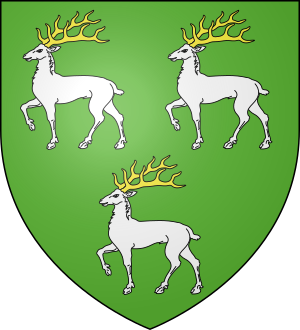Andrew Trollope facts for kids
Quick facts for kids
Andrew Trollope
|
|
|---|---|
| Died | 29 March 1461 Near Towton, Yorkshire, England |
| Battles/wars | |
Sir Andrew Trollope (died March 29, 1461) was a skilled English soldier. He fought in two very important wars: the Hundred Years' War and the Wars of the Roses. He was known for being a professional fighter who served different leaders during these turbulent times.
Contents
Andrew Trollope's Life
Early Military Career
Andrew Trollope came from a family of dyers in Durham, England. He started his long military career in France in the 1420s. He began as a man-at-arms, which was a trained soldier, often a knight or a nobleman's retainer.
He first served at a place called Tombelaine. Later, he was part of the garrisons (military groups protecting a fort) at Fresnay-le-Vicomte and Caen. He also served under famous commanders like John Fastolf and Matthew Gough. By 1442, he was a lieutenant (a military officer who helps a commander) at Fresnay.
Life in Calais
Before 1455, Andrew Trollope married Elizabeth, whose brother, Osbert Mundeford, was an important official in Normandy. This connection helped Trollope's military career. By 1455, Trollope became the Master Porter of Calais. This meant he was in charge of the port and its defenses.
In this role, he worked to stop pirates and French ships from sailing freely. He was very strict about controlling who could enter or leave the port.
Changing Sides in the Wars of the Roses
The Wars of the Roses was a series of civil wars fought in England between two rival families: the Yorkists (who used a white rose as their symbol) and the Lancastrians (who used a red rose).
Just before a big fight at Ludford Bridge, Trollope sailed to England with Richard Neville, 16th Earl of Warwick, who was known as the "Kingmaker". At the Rout of Ludford Bridge, Trollope was part of the Yorkist army. However, he made a surprising move: he switched sides and joined King Henry VI's Lancastrian army. He brought 600 men and important information about the Yorkist army.
Fighting for the Lancastrians
After switching sides, Trollope went back to France with Henry Beaufort, 3rd Duke of Somerset. They tried to capture Calais, but they didn't succeed. However, Trollope did convince the soldiers at Guînes to join the Lancastrians. He was then put in charge of defending Guînes.
But the Lancastrians faced more defeats. Trollope was forced to give up Guînes to the Yorkists. He then returned to England to continue fighting.
A Key Strategist
Trollope became a very important strategist (a person skilled in planning military actions) for Margaret of Anjou, who was King Henry VI's wife and a strong leader for the Lancastrian cause.
He helped plan an ambush at the Battle of Worksop in December 1460. He is also believed to have planned the Lancastrian strategy at the Battle of Wakefield. In this battle, important Yorkist leaders, Richard of York, 3rd Duke of York and Richard Neville, 5th Earl of Salisbury, were killed.
Andrew Trollope also fought bravely at the Second Battle of St Albans. During this battle, he stepped on a caltrop, which was a weapon with sharp spikes designed to hurt feet. Despite his injury, he was knighted by Prince Edward for his bravery.
The Battle of Towton
Sir Andrew Trollope was so important to the Lancastrian side that in March 1461, the new Yorkist king, King Edward IV, offered a reward of £100 to anyone who killed certain enemies of the Yorkist family, and Trollope was on that list.
On March 29, 1461, Sir Andrew Trollope fought in the Battle of Towton. This was one of the largest and bloodiest battles in English history. He shared command of the Lancastrian vanguard (the front part of the army) against King Edward IV's Yorkist army.
Sir Andrew Trollope was killed in the Battle of Towton. His death was a big loss for the Lancastrian cause. His son, David Trollope, also died in the same battle. After his death, he was attainted, which meant his property and titles were taken away because he was considered a traitor to the new king.
See Also


